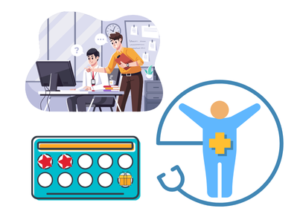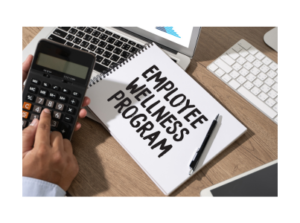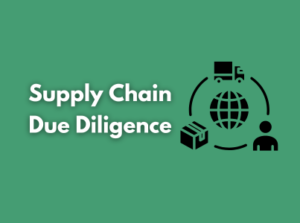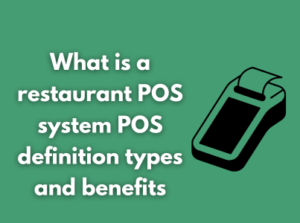Let’s be honest—trust is the magic glue that keeps employees invested in their workplace. Without trust, even the most competitive salaries or perks can seem hollow. And here’s the thing: trust is not built by chance; it’s earned, little by little, through thoughtful efforts. A well-implemented safety and health program is one of the surest ways for organizations to prove that they genuinely care about their employees’ well-being.
Imagine this: you walk into your office, and you feel confident that your physical, emotional, and mental safety is protected. How does that make you feel? Valued? Supported? Ready to give your best? That’s the power of a well-structured safety program. It tells employees loud and clear, “We care about you not just as workers, but as individuals.”
Why Safety Equals Trust
- Actions Speak Louder Than Words: When employees see tangible safety measures—such as ergonomic workstations, regular health checkups, or updated emergency protocols—it demonstrates that their needs are a priority. It’s not just about saying “safety matters”; it’s showing it.
- Consistency Builds Credibility: Continuously investing in health and safety builds long-term trust. Sporadic efforts don’t cut it. Employees notice when safety protocols are treated as essential rather than afterthoughts.
- Transparency Matters: Open communication about workplace risks and what’s being done to mitigate them fosters a sense of security. Employees need to feel included and aware—this builds that “we’re in this together” mindset.
The Emotional Connection Between Safety and Retention
Here’s where things get really interesting. Workplace safety isn’t just about avoiding accidents or mitigating risks—though those are, of course, critical priorities. It’s also a matter of emotional security. Knowing that their employer has taken comprehensive steps to ensure their safety allows employees to focus on their roles without anxiety or distraction.
What this builds is a sense of deep respect for the organization. An employee who feels safe and trusted starts to reciprocate that faith. They’re far less likely to look elsewhere for validation or better conditions. This emotional connection is priceless when it comes to retention.
Case in Point: Trust in Action
Let’s consider an organization that invests in mental health initiatives alongside physical safety. For example, they set up an employee assistance program (EAP), provide training on mental health awareness, and encourage open dialogue about stress management. What happens? Employees not only feel safer but also feel seen. This genuine demonstration of care cements loyalty, builds engagement, and boosts morale—which naturally reduces turnover rates.
Beyond Compliance: Fostering a Culture That Values Well-being
Let’s talk about something more meaningful than just ticking boxes on a compliance checklist: creating a thriving workplace culture where employees genuinely feel cared for. A safety and health program goes far beyond meeting legal requirements—it’s about cultivating an environment where well-being is embedded into the organization’s DNA. And trust me, employees notice when you’re doing more than the bare minimum.

Why Go Beyond the Basics?
Meeting compliance obligations is essential, sure, but stopping there can leave employees feeling like they’re just another cog in the machine. When organizations go above and beyond by adopting proactive safety and health strategies, they send a clear message: we prioritize you. This shift—from a rules-based approach to a value-based one—creates a sense of security that fuels employee satisfaction and engagement.
Employees want to know that their well-being isn’t an afterthought. Imagine walking into your office (or logging on remotely) knowing your company values your mental and physical health. That’s powerful—and it’s a significant factor in why people stay with an employer they trust.
How To Cultivate a Culture of Well-Being
Creating this kind of culture isn’t rocket science, but it does take intention and consistency. Here are some actionable ways to grow a workplace that truly celebrates the well-being of its employees:
- Leadership Buy-In: The tone is set from the top. When leaders champion safety and health programs visibly and passionately, employees are much more likely to value and participate in them.
- Listening to Employees: Regular feedback sessions, surveys, or informal check-ins can help managers understand the challenges employees face. If an outstanding safety program ignores employee input, it won’t stick.
- Prioritizing Mental Health: Offering resources to help employees navigate stress, anxiety, and burnout can show the organization’s commitment to the psychological as well as physical safety of its team.
- Making Everyone Accountable: When safety and well-being become everyone’s responsibility—not just the safety officer’s—culture transforms. This could include peer-led initiatives or team-driven problem-solving around workplace hazards.
Concrete Benefits of a Safety-Driven Culture
You might be wondering: does fostering this kind of culture deliver measurable results? The answer is a resounding yes. Companies with robust health and safety-focused cultures often see:
- Better Employee Morale: When employees feel their well-being matters, they are proud to be part of the company. This builds trust and loyalty.
- Lower Absenteeism Rates: Employees in safe and supportive environments are generally healthier, reducing unplanned sick days.
- Increased Collaboration: A healthy, mentally sound team is better equipped to work together seamlessly. People are more likely to engage and share ideas when they don’t feel undermined or overworked.
Reduced Turnover and Quiet Resignations: The Role of Health Initiatives
Employee turnover can be a costly and disruptive challenge for any organization. Quiet resignations—where employees disengage or mentally check out while still physically on the job—add another invisible layer of productivity loss. So, how can a well-implemented safety and health program play a pivotal role in combatting these issues? Let’s dive in.
1. Creating a Sense of Care: Everyone Wants to Feel Valued
It’s no secret: employees who feel cared for are more likely to stick around. A proactive health initiative says to your team, “We see you, and we care about your well-being beyond deadlines and deliverables.” Providing resources like ergonomic workspaces, mental health support, and fitness initiatives doesn’t just tick a compliance box—it builds trust.
For example: Imagine working for a company that offers free wellness check-ups, subsidizes gym memberships, and actively trains managers to recognize burnout. Wouldn’t you want to stay there longer? These efforts create a workplace where employees feel seen and supported.
2. Healthier Employees = Fewer Absences and Greater Engagement
When employees are physically and mentally healthy, the benefits ripple throughout the organization. Better health means fewer absentee days and less presenteeism (when employees are at work but distracted by health issues). This naturally translates into higher engagement and lower frustration.
Consider this: if an organization implements regular wellness workshops and provides access to counseling services, employees are better equipped to manage stress and take proactive care of their health. A healthy employee is far less likely to quietly disengage or search for another job, keeping turnover low and morale high.
3. Well-Being as the Antidote to Quiet Quitting
Quiet resignations often occur when employees feel overworked, undervalued, or disconnected from a company’s mission. Addressing this doesn’t necessarily mean months of expensive training programs. Sometimes, small tweaks in safety and health policies can strongly influence engagement levels.
For instance, managers can practice ongoing safety communication through clear and encouraging channels. Something as simple as “stretch breaks” during long meetings or encouraging work-life balance through wellness leave days can show employees that their contributions—and health—matter. When employees experience this level of understanding and support, they’re less likely to disconnect or daydream about their LinkedIn job alerts.
4. Seamless Integration of Physical and Mental Health Initiatives
Gone are the days when workplace health revolved solely around hard hats and fire drills. A well-rounded program integrates physical and mental well-being into its offerings. This might mean offering yoga sessions, mindfulness apps, or even workshops on financial health (after all, financial stress is a significant contributor to workplace dissatisfaction). When these elements are in place, employees are more likely to feel holistically supported.
Pro Tip: Pay special attention to mental health, as it’s often overlooked. Regular counseling opportunities, mental health first-aid training for staff, and anonymous suggestion boxes for work environment feedback can go a long way toward fostering trust and reducing resignations.
5. The Numbers Back It Up
- According to a study by OSHA, businesses with proper health initiatives and safety measures see turnover rates decrease by up to 48%.
- Engaged employees are 87% less likely to leave their jobs compared to their disengaged peers, Gallup research shows.
- Workplace wellness programs yield a return of about $1.50 for every dollar invested, according to calculations by the American Public Health Association.
Clearly, a well-planned safety and health program not only reduces turnover but attracts employees who stay for the long haul.
Productivity Boosts: How Safety and Wellness Translate to Job Satisfaction
Let’s talk about something we all want more of: happy, engaged, and productive employees. You might not immediately think that workplace safety and health programs are directly tied to productivity, but they absolutely are—here’s why. When employees feel safe and valued, they focus less on worry and more on doing their best work. And when they can work in an environment that prioritizes their wellness, job satisfaction naturally follows. It just makes sense, right?
To break it down further, let’s explore a few reasons why safety and wellness programs lead to a more productive, satisfied team:
1. Stress Reduction Fuels Better Focus
Chronic stress is a silent productivity killer. When employees work in an unsafe environment or feel their health isn’t valued, they spend significant mental energy worrying—about their safety, their workload, or even burnout. A solid safety and wellness program can nip this in the bud. Offering mental health resources, standing by ergonomic processes, or even proactively addressing workplace hazards reduces these concerns.
Plus, when people feel physically and emotionally supported, they’re more likely to stay laser-focused on their goals. Imagine this: a worker in a comfortable, well-designed office versus someone crammed into a cluttered, risky workspace—who’s likely to perform better? It’s a no-brainer.
2. Fewer Health Issues Mean Fewer Absences
Let’s be honest, sick days or on-the-job injuries don’t just impact employees—they put a strain on the entire team. A workplace designed with safety and wellness in mind actively reduces those risks. Ergonomic furniture? Fewer back issues. Clear safety protocols? A reduced likelihood of worksite injuries. Robust wellness programs? Fewer sick days due to chronic health conditions like stress or poor nutrition. Every day that an employee is happy, healthy, and present is a boost to team output.
Doing these simple (yet powerful) things keeps employees on the clock, contributing to projects, and feeling good about where they work.
3. Wellness Creates Loyalty—and Loyalty Drives Effort
Now let’s talk about the “feel-good” factor of safety initiatives. When a company invests time and resources into employee wellness, it sends a clear message: “We care about you as a person, not just a worker.” Employees notice when their leaders value them—and they respond with loyalty and a willingness to go the extra mile. Think of it as goodwill that pays off in the form of higher-quality work and better collaboration among teams.
Something as simple as offering standing desks, organizing regular wellness checks, or running physical fitness programs can help employees feel acknowledged and appreciated. Feeling respected encourages them to not only stay but to give their best.
4. Health and Safety as Key Elements of Job Satisfaction
Let’s not underestimate how much safety and wellness contribute to overall job satisfaction. Job satisfaction isn’t just about paychecks or promotions (although those are great!); it’s about feeling secure and valued. When employees don’t need to worry about workplace hazards or mediocre health benefits, they can focus on growth, creativity, and meaningful contributions instead.
Yes, financial incentives are great, but sometimes knowing you’ll head home without a back injury or undue stress adds that extra layer of satisfaction—keeping employees engaged for the long haul.
Bridging Generations: Retention Across Diverse Workforce Demographics
In today’s workplace, generational diversity is not just a buzzword; it’s the reality. From Baby Boomers to Gen Z, companies are now accommodating a mix of age groups, each with distinct values, needs, and expectations. But here’s the question: how can a well-thought-out safety and health program help retain employees across such a wide demographic spectrum? Let’s dive in!
The first thing to remember is this: safety and health matter to everyone. That’s the baseline. But the way a company tailors its approach to address the unique needs of each generation is what truly creates a lasting impact. Whether you’re 25 or 55, feeling safe, valued, and cared for is universal—but how we interpret and prioritize those needs changes with age. So, let’s consider how each demographic interacts with workplace safety and wellness programs.
Baby Boomers: Emphasizing Stability and Support
For Baby Boomers, many of whom may have been with an organization for years, loyalty and stability are critical. To them, a robust safety program signals an employer that is invested in creating a reliable, supportive environment. This group may also be more susceptible to physical wear-and-tear from years in the workforce, so initiatives like ergonomic workplace setups, routine health checks, and injury prevention programs can really resonate.
Gen X: Balancing Work, Family, and Wellness
Gen X employees are often juggling demanding careers with family responsibilities. They appreciate safety and health programs that not only protect them at work but also recognize their need for work-life balance. Flexible policies that support mental health, such as stress management workshops or hybrid work options, can help this cohort feel seen and respected. For them, a company that fosters well-being earns their long-term loyalty.

Millennials: Show Them the Values, Win Their Hearts
Millennials are vocal about their workplace expectations, and many prioritize mental health and personal development. They’re looking for companies that align their values with real action, not just lip service. Incorporating mental health resources, diversity-inclusive wellness programs, or even gamified fitness initiatives can make safety and health feel approachable and engaging for Millennials. Importantly, transparency in how the company supports its employees and communicates about safety is a big box to tick for this values-driven generation.
Gen Z: Wellness Tech and Proactive Measures
Ah, Gen Z—the digital natives. For this newer generation of workers, technology plays a major role in how they perceive and interact with workplace wellness. Companies that integrate app-based health programs, fitness trackers, or virtual mental health consultations can capture the attention of this tech-savvy group. Moreover, they’re growing up in a world more aware of stress and burnout, so proactive programs to address these issues can prevent them from looking elsewhere for employment.
Word of Mouth and Reputation: Safety Programs as a Hiring Magnet
Have you ever noticed how quickly word spreads about workplaces? Whether it’s a glowing recommendation or a cautionary tale, employees talk — and these conversations play a significant role in shaping a company’s reputation, especially in an era when platforms like LinkedIn, Glassdoor, and workplace forums amplify their voices. This is where your safety and health programs not only keep your current employees happy but can also become powerful tools for attracting top talent.
The Power of Word of Mouth in a Digital World
Employees who feel genuinely cared for are more likely to share their positive experiences with others, whether during casual conversations or online posts. For a company, this can create a ripple effect, as happy employees speak highly about their workplace. When people hear, “My company prioritizes my well-being and ensures everyone’s safety,” it’s hard not to lean in. Aren’t we all drawn to work environments where we feel secure and valued?
Conversely, neglecting safety and health practices can seriously harm a company’s reputation. Stories of accidents, negligence, or toxic work environments can spread just as quickly, turning away both potential hires and customers. That reputation is not just hard to shake; it can cost you in more ways than one.
Building a Reputation That Speaks for Itself
So, how can safety programs add to your reputation as an employer of choice? Brilliantly designed health and safety initiatives make your workplace stand out as modern, conscientious, and forward-thinking. Take companies like Patagonia or Google, for instance. Their robust wellness offerings — from ergonomic workspaces to mental health resources — inspire admiration and respect. These aren’t frivolous extras; they’re proof that the organization values people above all else.
When your company prioritizes safety and health, it whispers (or sometimes shouts), “We see you, and we care.” Those whispers snowball into something bigger—a brand identity that gets people excited about joining your team. And trust us, in competitive industries, that excitement is key to securing the brightest minds.
Attracting Talent Across Industries
Whether you’re in construction, healthcare, or tech, safety and wellness resonate universally. For younger generations entering the workforce, such as Millennials and Gen Z, workplace culture and values often matter just as much (if not more) than compensation. They actively seek companies where they feel safe — both in the literal sense and within a stress-free, supportive environment.
Older workers, too, appreciate health programs that cater to physical well-being or preventive care, underscoring how safety systems accommodate people at all stages of their careers. A robust wellness initiative ensures prospective employees — no matter their age, experience level, or background — perceive your company as inclusive and forward-thinking.
Financial Impacts: Measuring the Cost of Employee Retention
Let’s talk numbers! It’s no secret that retaining employees comes with a financial benefit, but have you ever thought about just how much it costs an organization to lose even one experienced team member? Spoiler alert: it’s a lot more than you’d think. When you factor in safety and health initiatives, those programs can translate directly into a better bottom line. Here’s how.
The Cost of Employee Turnover: Why Losing Talent is Pricey
When an employee leaves, organizations don’t just lose their skillset. Employers are left to shoulder the burdens of recruitment expenses, onboarding costs, training time, and even temporary drops in productivity. Industry experts estimate that turnover can cost anywhere from one-half to twice an employee’s annual salary, depending on their level and expertise. For example, replacing a highly-skilled employee earning $70,000 a year could easily set the company back up to $140,000. Ouch!
On the flip side, investing in a well-designed safety and health program can help you avoid many of these costs. After all, when employees feel protected, supported, and valued, they’re far less likely to start eyeing the exit door.
Health and Safety Programs as Financial Safeguards
Here’s where safety and health programs play superhero. By creating a work environment that prioritizes employee well-being, the chances of burnout, workplace injuries, and illness dramatically decrease. This doesn’t just benefit the employees—it directly reduces the hidden costs associated with absenteeism, workers’ compensation, and even lawsuits.
In fact, organizations with strong safety cultures report 34% lower turnover rates, which translates into real savings. Why? Because when employees feel physically safe and emotionally secure, they’re far more likely to stay where they’re appreciated. That means fewer hiring campaigns and fewer dollars spent trying to fill vacant roles.
ROI: A Practical View of Retention Investments
Let’s talk return on investment (ROI). Introducing something as simple as ergonomic workplace tools or offering mental health support can yield a tremendous payoff over time. According to one study, companies that spend on workplace wellness see an ROI of the equivalent of $3 in benefits for every $1 invested. That’s not just good for morale—it’s smart business.
- Example 1: A small company invests in regular training for safety standards. Their injury rate drops, and so do absentee rates. The costs saved on medical expenses alone make the initiative worthwhile in just one year.
- Example 2: A nationwide corporation offers flexible schedules and stress management workshops. As a result, their turnover rate falls below the industry average, saving millions in recruitment and training costs annually.






